Why does the bow go to the arrow and what to do?
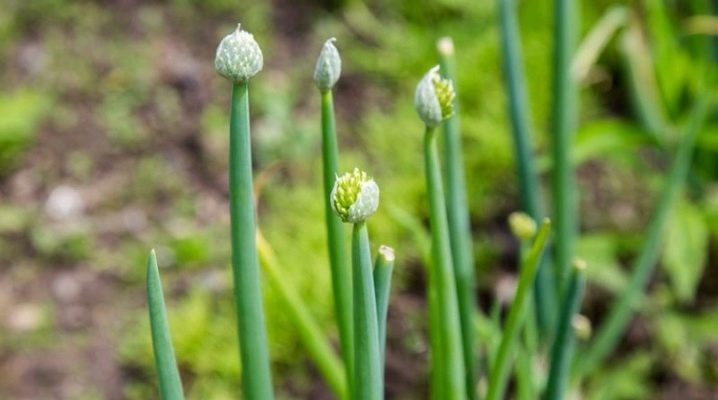
The flower arrow is a sign of the ripeness of the onion. The plant has reached its maximum and believes that it is time to give offspring. But sometimes, clearly young and small onions begin to bloom actively. Consider why the onion goes into the arrow and what should be done to redirect the plant's strength to the growth of bulbs and feathers.
Causes and consequences
If green onions turn yellow in June, they lack nutrition or are affected by pests. But it happens that a perfectly healthy onion does not want to grow, it prefers to bloom. If an onion planted on a head or turnip in spring has begun to produce flower stalks, a good harvest of feathers will not be obtained, the bulbs will be small and weak. Even if you collect the heads, they will be poorly stored, quickly deteriorate. Therefore, gardeners negatively perceive the appearance of arrows.

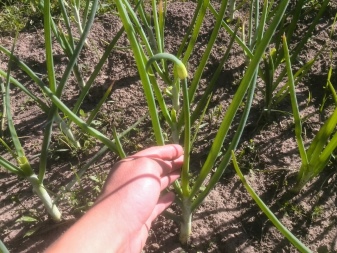
All the reasons why the bow goes to the arrow.
- Improper storage. Onion sets should be stored cool, at temperatures up to 5 ° C. Pre-sorting of onions is also important. For sowing, onions are left either 8-14 mm in diameter, or average 14-22 mm. Too large a set easily goes into the arrow.
- Planting already sprouted bulbs. Such plants mature faster and begin to bloom. To prevent too early germination, observe the storage regime: low temperature, dry air, ventilated room.
- The bow was incorrectly prepared for planting. Onions are a seasonal plant. Its rhythms can be regulated by exposure to different temperatures. The second important point is that spores of fungal diseases are perfectly preserved on the scales of the bulbs. If conditions are right for their development, they can stimulate the formation of arrows. Antifungal treatments reduce the risk of injury.
- The bow was planted before winter. Winter onions ripen early. For landing, you need to choose the optimal size. Before winter, it is best to plant small onions - up to 8-14 mm. Although the smallest of them may freeze, the onions will have time to gain the required size by the time of harvest. In the spring, it is better to plant a little larger onion - 14-21 mm. A large set, 2-2.5 cm, is a winter onion for greens. In the spring it can also be planted, its plus is that there will definitely be a harvest, but the risk of forming arrows is great, especially if there were temperature drops during storage.
- Dryness, lack of watering. Even young onions, faced with a lack of moisture, believe that it is time to enter the breeding phase. Arrows appear instead of feathers. All types of onions are sensitive to watering - biennial, perennial: family, leek, batun.
- Excess watering. Excess moisture for onions is also stressful. And the onion will react to any load by trying to give seeds as soon as possible.
- Incorrectly selected species or variety. Onions with red or purple hulls are more likely to be pointed than the classic golden onions. There are also varieties that are almost not subject to shooting.
- Improper harvesting. Rushing or delaying deadlines is equally harmful. Harvesting too early leads to the fact that the husk does not have time to form, late harvesting provokes onion cracking, repeated root growth. In both cases, the bulbs are poorly stored and are susceptible to disease.
The cultivation method is also important. Onions love planting in warm soil - about + 20 ° С, although planting at + 12 ° С is also allowed. However, it is the well-warmed soil that minimizes the likelihood of arrows.In most regions of the Russian Federation, such planting will be too late, so onions can be grown as seedlings. When grown in seedlings, shallots almost do not form arrows, and leeks will not have arrows at all.
Interesting: the increased arrowing of the bow can predict periods of prolonged dry weather.
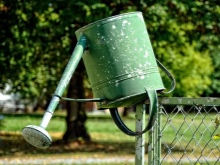

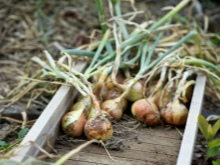
What do we have to do?
If the onions are shooting, nothing drastic can be done this year. Arrows cut or take away. In the future, agricultural technology is being revised.
- If arrows appear, you need to cut them off until they reach 20-30 cm.
- Arrows can be eaten: salads, first and second courses.
- You can leave the flower stalks for the seeds, but for these purposes, seeds from two arrows are usually enough.
- Experienced gardeners prefer not to save the shooting bulbs at all, they use them for greens. Because even with plucking it will not be possible to save a large turnip.
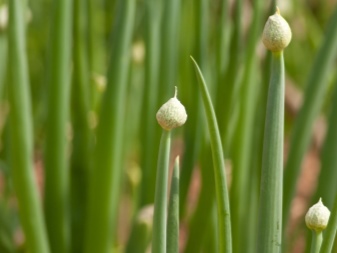
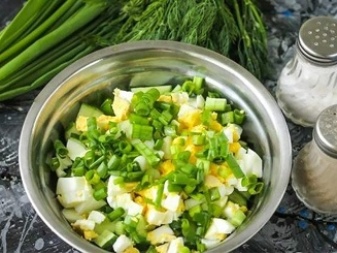
Shooting prevention
In order to grow onions without arrows, suitable conditions and care are arranged for him.
- You need to store the seed either at a constant temperature of -1 ... -3 ° C, or you need a combination of temperatures: first at + 20 ° C, then at -1 ... -3 ° C, in the spring, warming up at + 30 ° C for 2 days and again storage at + 20 ° C. Chaotically changing temperatures are almost guaranteed to cause arrows to appear.
- Freezing should be avoided. Plants frozen during storage very often go into the arrow.
- The air humidity in the storage room should be in the range of 60-70%. If it is higher, the bulbs will start to rot or sprout, lower it will dry.
- Onion sets on greens are soaked for 2 minutes in hot water (60 ° C), then immediately put into cold water. This treatment stimulates the formation of a thick feather. You can also warm up onions hung in nets near a fire or portable battery.
- Before planting, onions are treated with fungicides, soaked for 3 hours in a solution of soda (1 tablespoon per 1 liter of water) or ordinary salt (1 tablespoon with top per 1 liter of water), kept in a light pink solution of potassium permanganate.
- Planting is carried out in a soil suitable for temperature. For family onions, the optimum soil temperature is + 5 ° С, for leeks - from + 15 ° С, onion is best grown by seedlings at a temperature of + 6 ... + 12 ° С, for shallots, the range of + 15 ... + 22 ° С is more suitable ...
- A site with loose soil is prepared for planting. Sand, peat are added to clayey, chalk, slaked lime, dolomite flour or ash are added to acidic ones.
- Calibrated watering is required. The onion is watered abundantly at least 4-5 times per season; in dry summer conditions, drip irrigation is useful. Shallots are watered 3-4 times during the dry period of summer. It is just that it is not enough to water it well in time, it is also necessary to provide the soil with ventilation, therefore, loosening of the soil is necessary.
- The onion is harvested when its leaves begin to lay. This is usually the end of July-August.
It is best to go through all stages of cultivation and storage on your own or buy seed only from reliable sellers who have provided suitable storage conditions for the seed. It is better to sow the onion before winter, then in the spring of next year it will not shoot as quickly as biennial plants sown in spring.
In perennial culture, plants in subsequent years will grow faster and shoot faster. So to minimize arrows, it is better to use a 2-year turnover rather than keep perennial plantings.
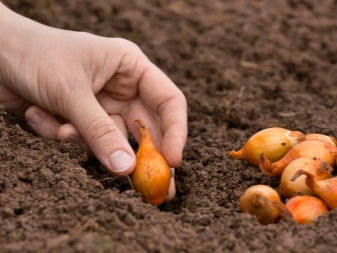

What varieties do not give arrows?
There are varieties that are less prone to arrow formation than others. The most popular ones.
- "Shakespeare" - a winter variety with golden bulbs and white pulp weighing 100 g. Early, fruitful, disease resistant. The taste is wonderful. Grows well in Siberia. One of the best grades for beginners.
- "Centurion" F1 - early maturing Dutch hybrid. The bulbs are light golden, elongated, weighing 90-100 g. The flesh is snow-white, moderately sharp. The variety is planted in spring. Early maturing, not susceptible to disease, perfectly stored, even small.
- "Sturon" - Dutch winter variety, which has earned wide popularity due to its unpretentiousness and keeping quality. The bulbs are large - up to 200 g, golden brown, harmoniously rounded. The pulp is white. Mid-season, not affected by diseases.
- "Senshui yellow" - early ripe winter onions of Japanese selection. The integumentary scales are golden yellow, the flesh is white, the outer layers are slightly golden. The heads are beautiful, poured, weighing 150-180 g, the taste is soft. Resistant to shooters and downy mildew.
- "Troy" - Dutch early ripening onion. Planted in spring. Heads with golden brown husks, calm shade, white flesh, medium sharp. The shape of the heads is round or flat-round. Unpretentious and not inclined to tie arrows.
- "Radar" Is a Dutch variety with great potential. Mature bulbs have a flattened shape and can reach 300 g. The flesh is white, sharp, the husk is golden brown, strong, the bulbs are very soft. Winter variety, resistant, keeping.
- "Red Baron" - late variety with spectacular red bulbs. The pulp is white with purple-red streaks, the taste is spicy. Fruit weight - up to 120 grams. Planted in spring and autumn. The variety is persistent and adaptive, it keeps well.
- "Stuttgarter Riesen" Is a well-known German cultivar with calibrated flattened bulbs. Weight - 100-150 g. The color of dry scales is honey, the flesh is white, semi-sharp. They are planted before winter. Variety resistant to diseases, very prolific.
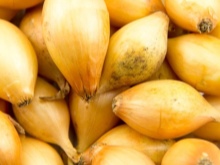
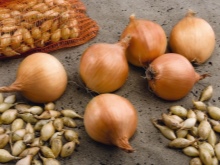
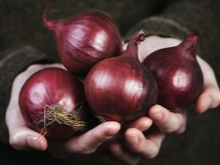
You can also grow other varieties that have good keeping quality, hardiness, disease resistance and their ripening time can be easily coordinated with the climate in the region. These varieties will produce fewer arrows. Usually these are early or mid-season varieties for most regions of the Russian Federation. Late varieties will produce fewer arrows when grown through seedlings.
The seedling method of growing onions is often found labor-intensive, but it is he who allows you to turn around in 1 season. The early, weakly sharp, sweet varieties of onions are poorly stored, it is not possible to preserve the sets, and even if it does work, the onions quickly go into the arrow. If seedlings are planted in the ground at the age of 50-60 days, the turnip has time to fully ripen, such bulbs can lie without spoilage and germination for up to 9 months. The seedling method is especially good for regions with short summers, early and cold autumn, unstable weather in the second half of summer.
Experienced gardeners call improper storage as the first reason for active arrow shooting. Watering can provoke, but this is not the most fundamental point. Even perfect watering will no longer help an improperly stored onion. If from year to year onion plantings form arrows, it is worth switching to winter planting of small onion sets.
Sevok up to 10 mm is still poorly stored even at the optimum storage temperature. And in the soil he is comfortable, and in the spring he begins to gain strength gradually, not in a hurry to go into bloom.
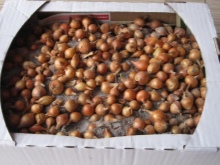
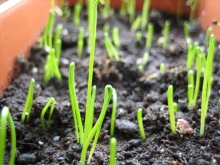
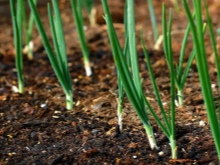













The comment was sent successfully.